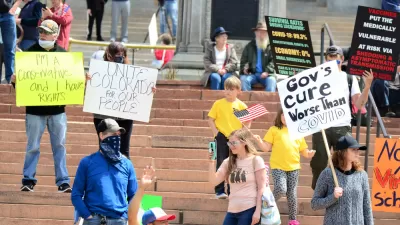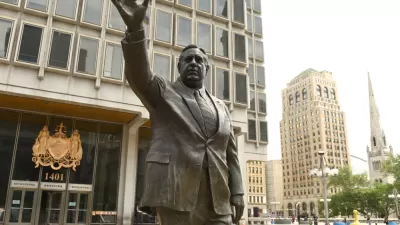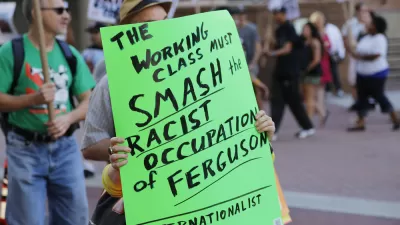Add COVID-19 to the list of long-term consequences of the racist and discriminatory regulatory and lending practices of the 20th century.

A report published last week by the National Community Reinvestment Coalition finds that formerly redlined neighborhoods are at greater risk for COVID-19.
According to the "Redlining and Neighborhood Health" report, formerly redlined neighborhoods "suffer not only from reduced wealth and greater poverty, but from lower life expectancy and higher incidence of chronic diseases that are risk factors for poor outcomes from COVID-19," according to the website that shares the new study.
Jared Brey, writing for Next City, provides news coverage of the report, describing the study's methodology, sharing soundbites front he researchers who worked on the report, and also mentioning the recommendations included in the report.
Brey writes: "The report builds on previous reporting on how the COVID-19 pandemic has disproportionately harmed Black communities. In order to address the disparities, the report’s authors recommend implementing inclusionary zoning to create affordable housing outside of redlined neighborhoods, restoring the Affirmatively Furthering Fair Housing Rule, and expanding housing vouchers and the Community Reinvestment Act."

Study: Maui’s Plan to Convert Vacation Rentals to Long-Term Housing Could Cause Nearly $1 Billion Economic Loss
The plan would reduce visitor accommodation by 25,% resulting in 1,900 jobs lost.

North Texas Transit Leaders Tout Benefits of TOD for Growing Region
At a summit focused on transit-oriented development, policymakers discussed how North Texas’ expanded light rail system can serve as a tool for economic growth.

Why Should We Subsidize Public Transportation?
Many public transit agencies face financial stress due to rising costs, declining fare revenue, and declining subsidies. Transit advocates must provide a strong business case for increasing public transit funding.

How to Make US Trains Faster
Changes to boarding platforms and a switch to electric trains could improve U.S. passenger rail service without the added cost of high-speed rail.

Columbia’s Revitalized ‘Loop’ Is a Hub for Local Entrepreneurs
A focus on small businesses is helping a commercial corridor in Columbia, Missouri thrive.

Invasive Insect Threatens Minnesota’s Ash Forests
The Emerald Ash Borer is a rapidly spreading invasive pest threatening Minnesota’s ash trees, and homeowners are encouraged to plant diverse replacement species, avoid moving ash firewood, and monitor for signs of infestation.
Urban Design for Planners 1: Software Tools
This six-course series explores essential urban design concepts using open source software and equips planners with the tools they need to participate fully in the urban design process.
Planning for Universal Design
Learn the tools for implementing Universal Design in planning regulations.
City of Santa Clarita
Ascent Environmental
Institute for Housing and Urban Development Studies (IHS)
City of Grandview
Harvard GSD Executive Education
Toledo-Lucas County Plan Commissions
Salt Lake City
NYU Wagner Graduate School of Public Service





























